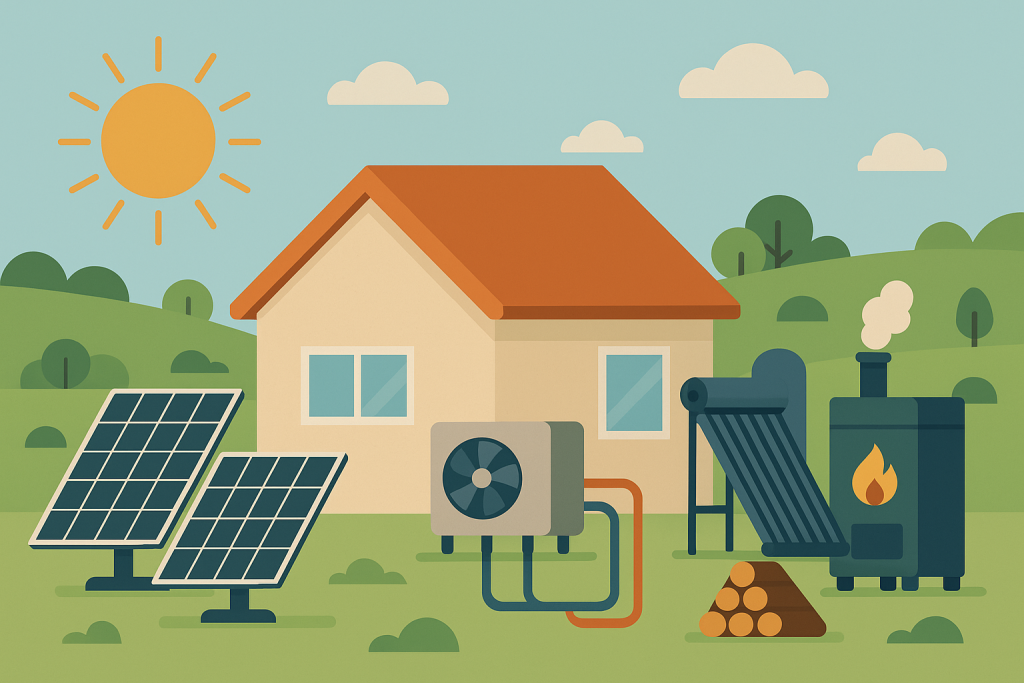The profound role that heating plays in our day-to-day lives cannot be underestimated; after all, we depend on it for simple comfort in our homes and workplaces, and it helps to protect health. However, heating also plays a crucial part in all manner of industrial processes, and it is key to food preparation, too.
There is, though, another aspect of heating that presents potentially very serious implications: its climate impact. Indeed, the Energy Saving Trust has stated that heating accounts for more carbon dioxide (CO2) emissions than any other aspect of the life of the average UK household.
This reality underscores that we can’t keep on depending on the same old fossil fuel-based heating methods, if we are to drive down our carbon emissions, reduce energy costs, and cultivate independence from imported energy.
What Do We Mean By ‘Integrating Green Technologies’?
What we are referring to here, is the integration of renewable energy sources, environmentally friendly solutions, and energy-efficient technologies into our heating systems.
For you and any buildings or premises for which you are responsible, this could involve switching from potentially outdated and inefficient heating arrangements – such as non-condensing gas boilers and/or electric resistance heaters – to such green tech as biomass boilers, heat pumps, smart controls, and solar thermal systems.

To elaborate slightly on the word “integrating”, though, it is worth noting that your own building’s transition may not necessarily entail an abrupt changeover to entirely “green” technology.
That’s because you may well ultimately incorporate both the latest and more traditional heating technologies into a hybrid system, at least to begin with, in order to maximise both efficiency and reliability. One example of this would be the pairing of a heat pump with a gas boiler or another backup source.
3 Common Examples of Green Technology for Heating
Below are some of the key technologies that you may consider having retrofitted or designed for your property – whether as part of a broader existing system, or “from the ground up”:
Heat Pumps
The credentials of heat pumps as a “green” technology are founded on the fact that they transfer heat, instead of generating it through combustion. This helps bring about lower carbon emissions and enhanced energy efficiency.
While such impressive efficiency is on offer from both air source heat pumps (ASHPs) and ground source heat pumps (GDHPs), these two types differ markedly in where they gain their heat. ASHPs extract heat from outdoor air – even at low temperatures – and GDHPs use buried pipes to extract theirs from the ground.
Solar Thermal Systems
Also referred to as “solar water heating systems”, solar thermal systems reduce a building’s dependence on fossil fuels for heating, by capturing sunlight for the heating of water.
More specifically, these systems draw upon energy from the sun to heat water in a hot water cylinder or a thermal energy store.
Most of these systems do have their limitations, though; they tend to be designed purely to provide hot water for hot taps, baths, and showers, instead of sending any hot water to the property’s radiators.
To pick up on our earlier-mentioned theme of integration with older technology, solar thermal systems are also normally used alongside a conventional boiler or immersion heater, instead of outright replacing it. This reflects the fact that the amount of available solar energy typically varies throughout the seasons.
Biomass Boilers
The term “biomass fuel” refers to organic material that can be used for energy production, encompassing the likes of wood, plants, manure, and household waste.
Of these, wood fuel is the obvious choice for heating a home. So, in the case of a biomass boiler, it is typically wood pellets or logs that are burned to provide heating and hot water.
A biomass boiler can be a particularly sensible investment for those that have larger or rural older buildings, where there is space available for both the boiler itself and the storage of the wood pellets, chips, or logs.
Just One More Thing…
Are you looking seriously at your options for integrating green energy into your property’s heating systems? If so, various online calculators are available that can assist you in assessing the feasibility, efficiency, and cost-effectiveness of the renewable energy solutions out there.
You might find yourself, then, using an online BTU to kilowatt hour calculator for system planning, or turning to a heat loss calculator to determine the heat loss of your building. The latter, for instance, can be crucial to your efforts to ensure any new heating systems for your property are appropriately sized.

